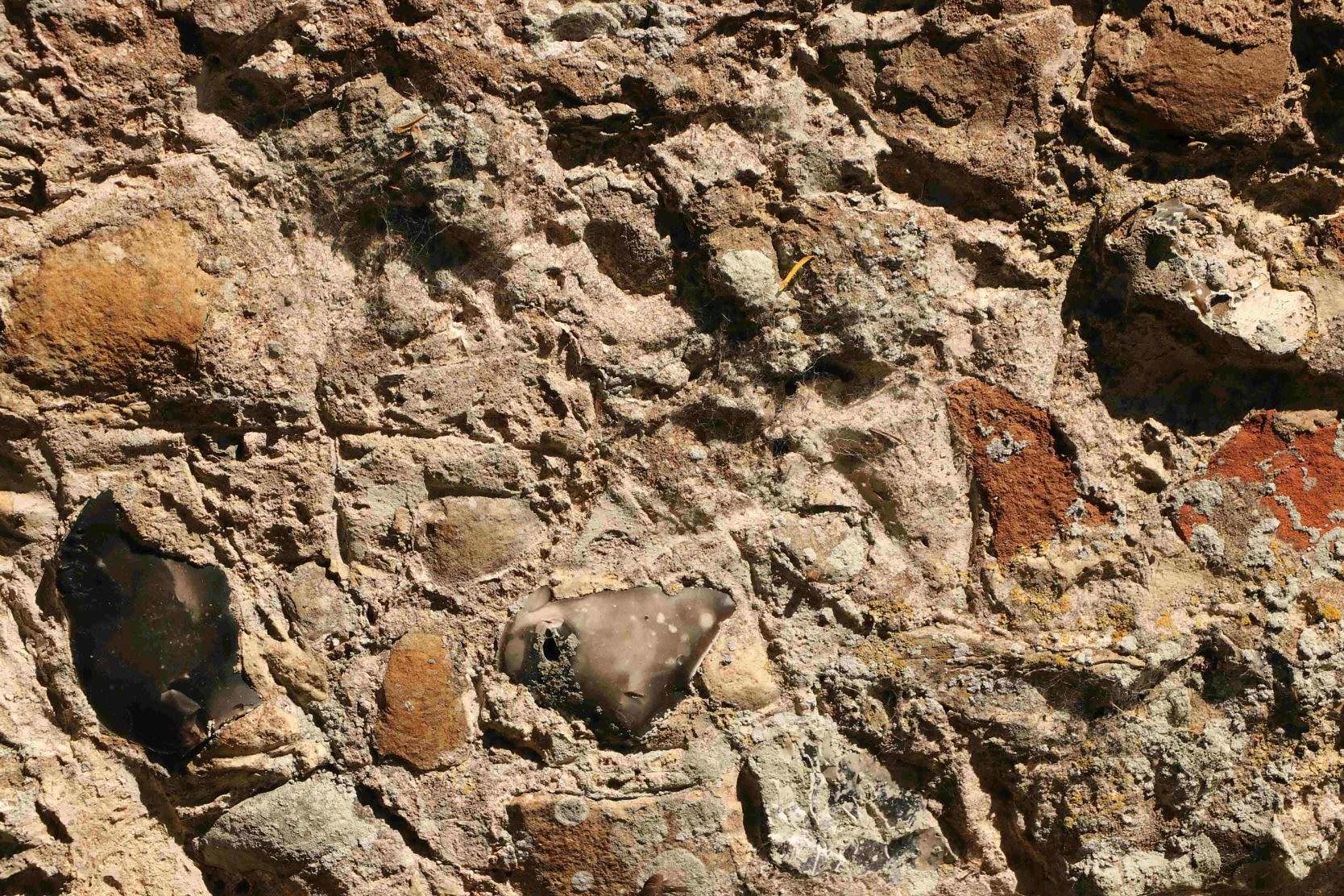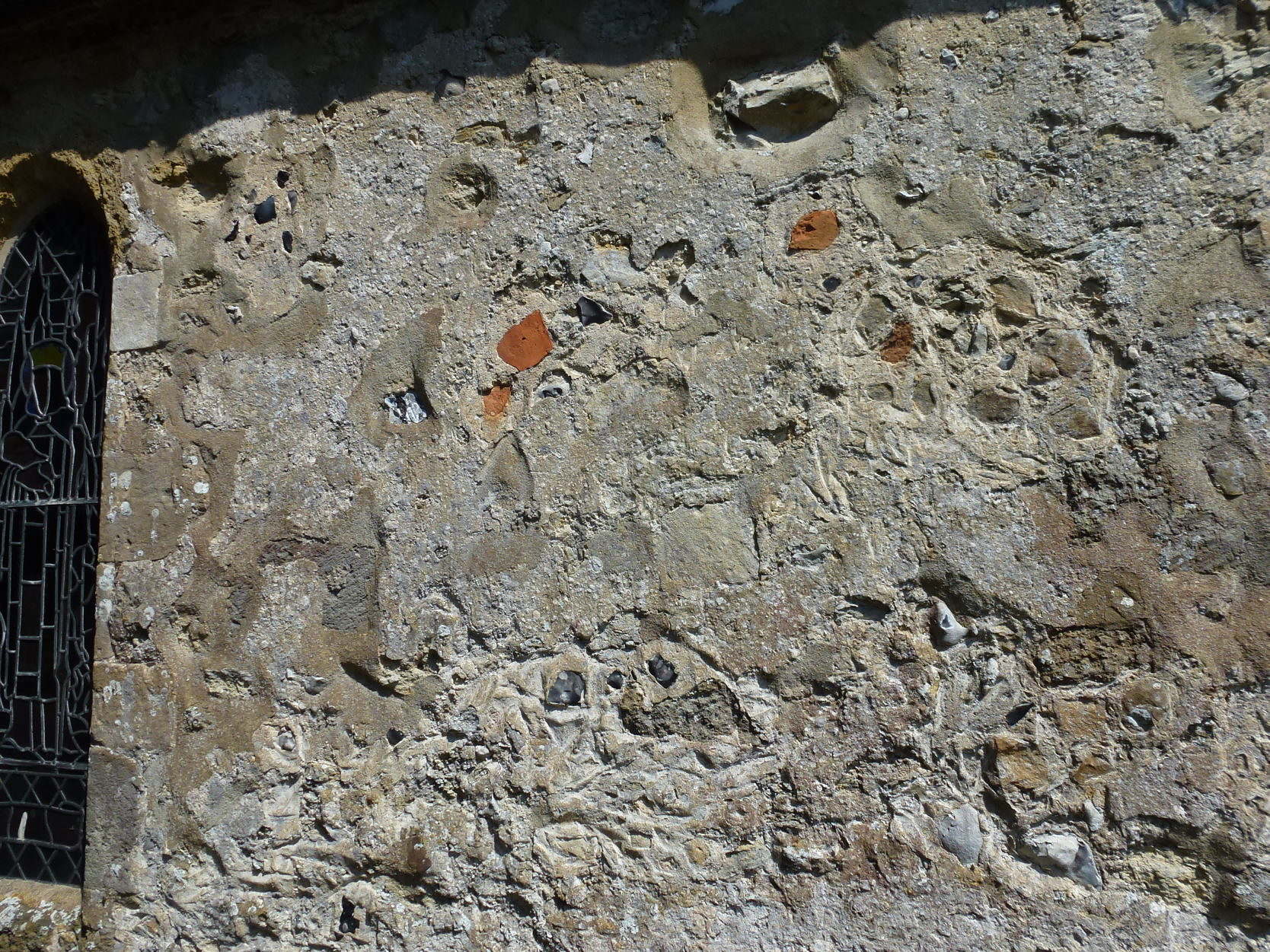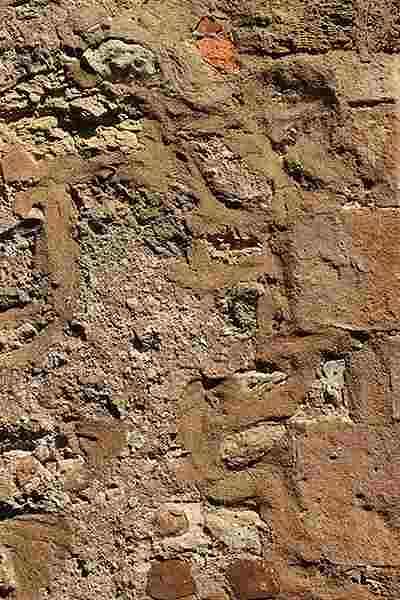Exterior: Rendered Walls
We now are able to see the actual stones from which the church was built. But was the stonework always so visible? Apart from the dressed stone of the doorways, windows and quoins, the stonework is often rather untidy, making one wonder whether the building was originally rendered. For if it was rendered, it wouldn’t have mattered too much how untidy the stonework underneath was. And in fact, there are many little — and some not so little — areas of render on the St Michael’s walls, not all original, though some almost certainly is. But most of the render has been, quite clearly, deliberately removed.

Traces of original Norman render
The next picture, from the south-east wall of the aisle, shows how random small pieces of tile, flint and stone have been inserted in the wall before the render was applied. There appears to be at least one later application of render in some parts. You can see the marks left by the workman’s trowel.

Medieval and later render

More modern render
So, what’s likely to have happened. Here’s a quote from a paper on church restorers in Leicestershire: [Brandwood, 1990]
“Nineteenth-century restorers transformed the appearance of all but a handful of churches in Leicestershire. Box-pews and galleries were ejected and open benches and choir stalls put in; plaster ceilings were removed in favour of open timber roofs; brick floors were replaced by coloured tiles; stained glass appeared in countless windows… One further dramatic feature of nineteenth-century change is the removal of rendering on church walls.”
This could almost have been written about St Michael’s in Sussex. As we know, at St Michael’s church in the 19th century box pews and a gallery were removed, the stone floor was replaced by Victorian tiles — and the external walls were stripped of their render.
In fact, where walls were of rubble-construction, as are most of the walls here, render was applied to provide a waterproofing outer layer. (St Michael’s medieval sister church, St Mary the Virgin, at nearby North Stoke, has most of its render still.) Although little direct evidence survives, most medieval churches were also limewashed, even over ashlar masonry. An 11th century writer noted that Europe was “cladding itself everywhere in a white mantle of churches”. Before the 12th century, in Wales, Gwynedd glittered “with limewashed churches like the firmament with stars”. So we can reasonably assume that St Michael’s would have stood out with its limewashed rendered walls.
The Victorians were certainly guilty of removing render from many churches, and changing their appearance drastically, but the absence of render now allows us to see many details of the building’s construction and history that would otherwise be hidden.